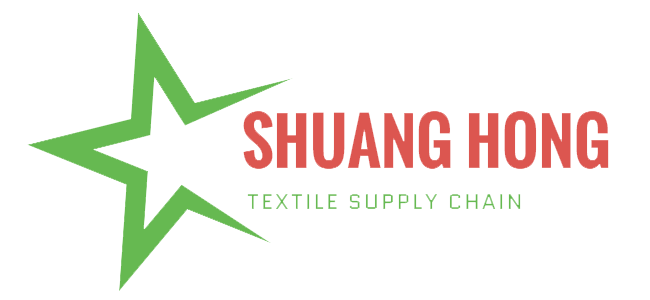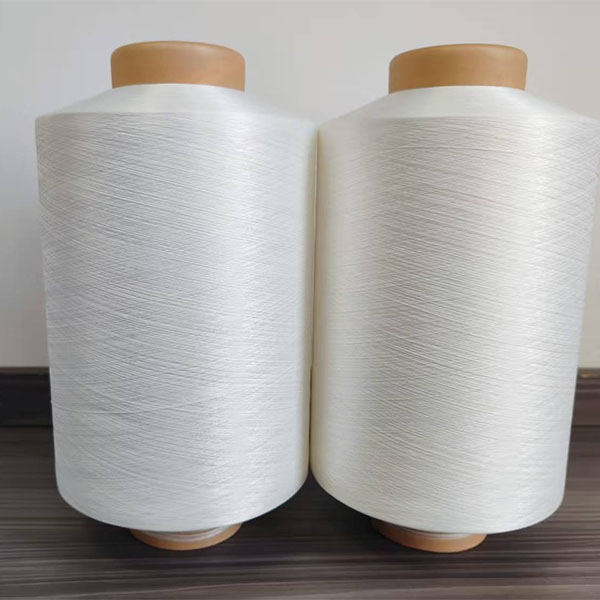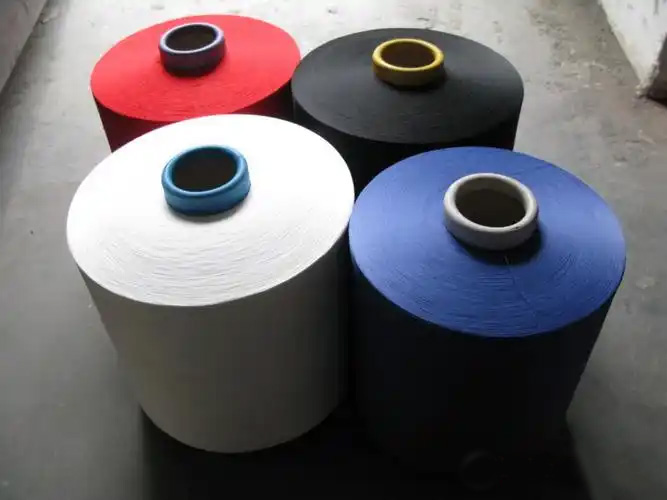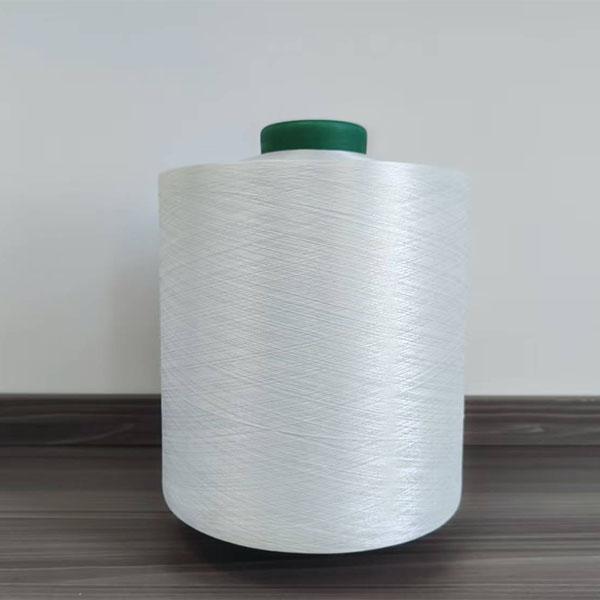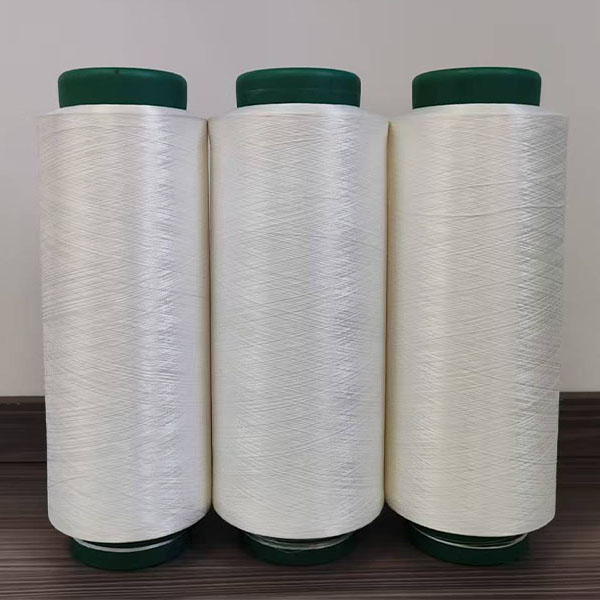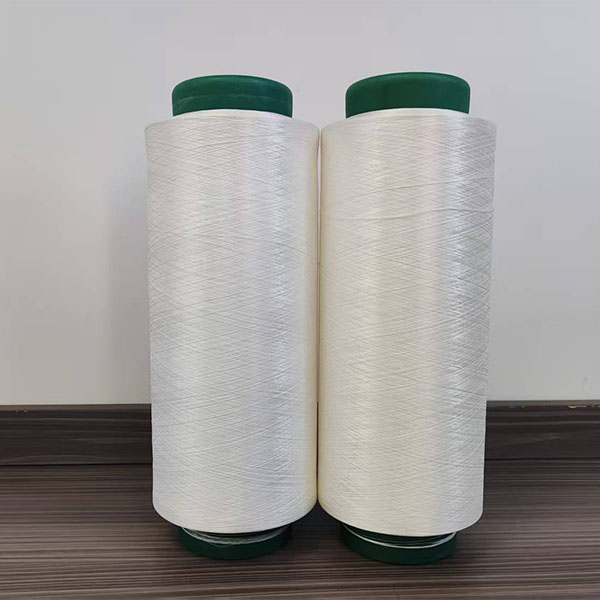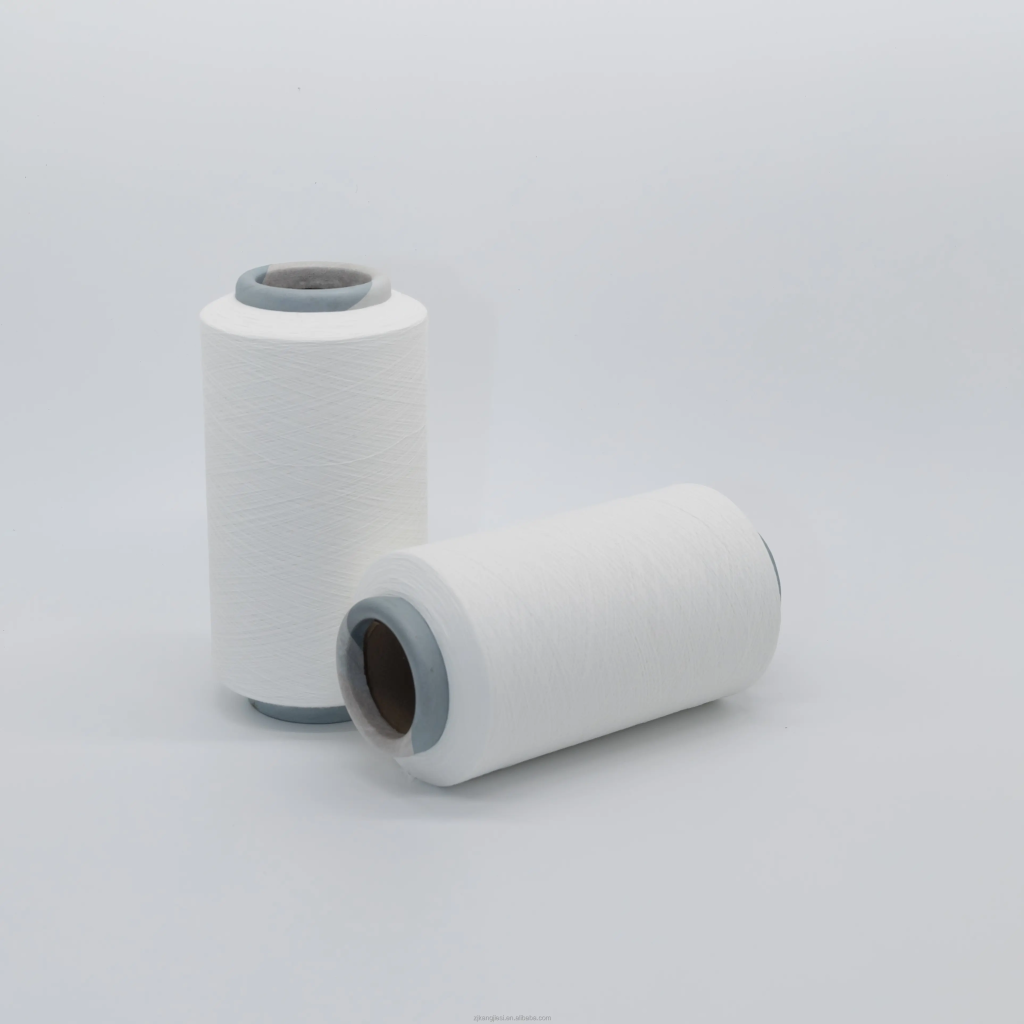» DTY 50D/72F Polyester Yarn
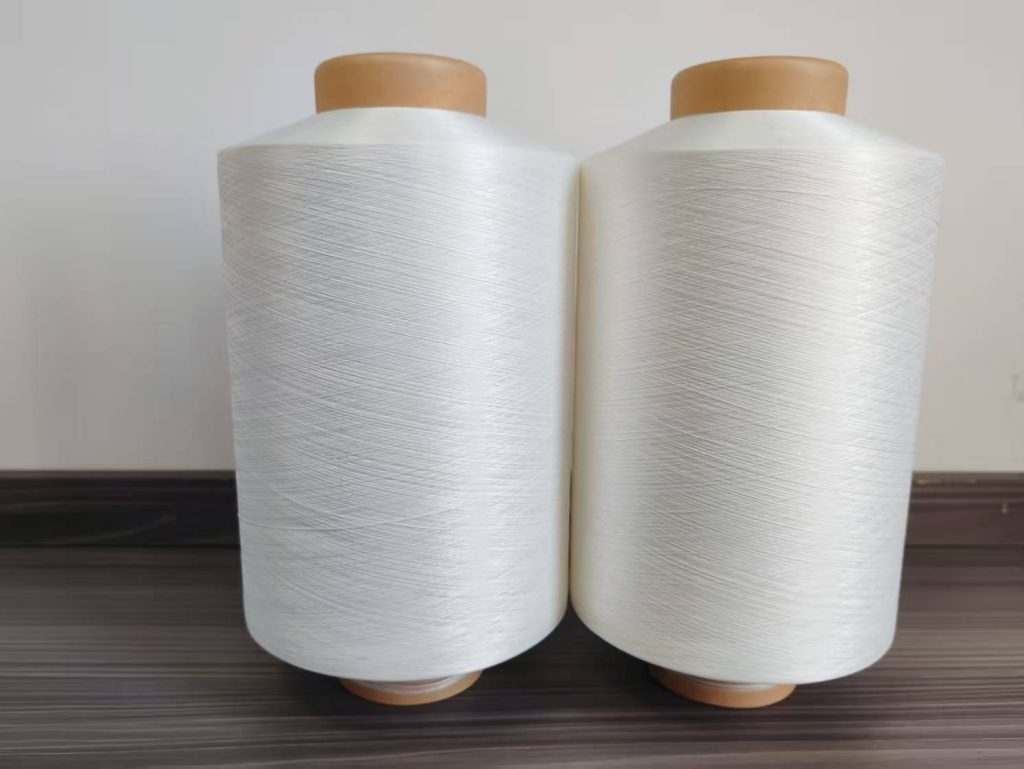 DTY (Draw Textured Yarn) is a type of polyester filament yarn that is subjected to a special texturing process, which imparts it with desirable characteristics such as increased elasticity, smoothness, and a soft touch. DTY yarn is widely used in various textile applications for its versatility and performance. DTY 50D/72F is a specific grade of DTY yarn, with 50 denier (D) representing the thickness of the individual filament and 72 filaments (F) indicating the number of filaments used in the yarn structure. This grade of DTY is commonly employed in the production of lightweight fabrics, offering a balance of strength, softness, and appearance.
DTY (Draw Textured Yarn) is a type of polyester filament yarn that is subjected to a special texturing process, which imparts it with desirable characteristics such as increased elasticity, smoothness, and a soft touch. DTY yarn is widely used in various textile applications for its versatility and performance. DTY 50D/72F is a specific grade of DTY yarn, with 50 denier (D) representing the thickness of the individual filament and 72 filaments (F) indicating the number of filaments used in the yarn structure. This grade of DTY is commonly employed in the production of lightweight fabrics, offering a balance of strength, softness, and appearance.
In this article, we will explore the characteristics, production process, applications, and benefits of DTY 50D/72F, while also comparing it to a similar type, DTY 50D/36F, to highlight their differences.
Characteristics of DTY 50D/72F
DTY 50D/72F has several defining characteristics that make it suitable for various textile uses.
-
Denier (50D): The “D” in 50D stands for denier, a unit of measure for the thickness of the yarn. A 50D yarn is relatively fine, which makes it suitable for creating lightweight fabrics that are soft and comfortable. Denier directly impacts the fabric’s texture, smoothness, and how it drapes, with lower denier values resulting in finer yarns.
-
Filament Count (72F): The number 72F indicates that the yarn is made up of 72 individual filaments. A higher filament count tends to make the yarn smoother and finer, contributing to the fabric’s softness, glossy appearance, and improved drape. The higher the filament count, the more uniform and consistent the texture of the fabric will be, which is ideal for high-end fashion fabrics and apparel.
-
Texture and Elasticity: DTY yarn is known for its texture, which is achieved through a heat-setting and drawing process. This texturing process imparts a slight curl or wave to the yarn, giving the fabric more elasticity and a soft, cushioned feel. The yarn maintains its shape better, providing fabrics with improved durability and resilience against wrinkles.
Production Process of DTY 50D/72F
The production of DTY 50D/72F involves several key steps, each of which contributes to the yarn’s unique properties.
-
Polyester Raw Materials: The process begins with the selection of high-quality polyester chips, which are melted and extruded into filaments. The polyester filaments are then cooled and wound onto bobbins.
-
Texturizing Process: The key step in creating DTY is the texturing process. The filaments are drawn and heat-set in a controlled environment to create the desired texture. The drawing process stretches the filament to increase its strength and elongation, while the heat-setting ensures that the yarn retains its shape after texturing. This process imparts the yarn with the necessary elasticity and resilience.
-
Winding and Finishing: After texturizing, the yarn is wound onto large spools, ready for weaving or knitting into fabrics. Finishing techniques may also be employed to further enhance the texture, shine, or color of the yarn.
Applications of DTY 50D/72F
DTY 50D/72F is highly versatile and finds applications in various industries due to its unique combination of smoothness, elasticity, and durability.
-
Apparel: This grade of DTY yarn is commonly used in the production of lightweight garments such as shirts, dresses, lingerie, and sportswear. The soft texture and smooth finish make it ideal for clothing that needs to be comfortable against the skin while still looking elegant.
-
Home Textiles: DTY 50D/72F is also used in the manufacturing of home textiles, including bed linens, curtains, and upholstery fabrics. Its sheen and softness contribute to the overall aesthetic of these products, while its durability ensures longevity.
-
Activewear and Sportswear: Given its elasticity and moisture-wicking properties, DTY 50D/72F is increasingly popular in the activewear sector. It can be used to make garments that require a high degree of comfort, stretch, and breathability, such as yoga pants, sports bras, and running clothes.
Benefits of DTY 50D/72F
-
Soft Hand Feel: One of the primary advantages of DTY 50D/72F is its soft hand feel. The smoothness and texture of the yarn make fabrics made from it feel comfortable and luxurious to the touch.
-
Wrinkle Resistance: DTY yarns are known for their wrinkle resistance, which makes them ideal for garments that need to retain their shape even after extended wear or washing.
-
Excellent Dyeability: Polyester fibers are known for their excellent dyeing properties, and DTY 50D/72F is no exception. The yarn can be dyed to a wide range of colors, and the color retention is typically good even after multiple washes.
-
Versatile Applications: Due to its fine texture and strength, DTY 50D/72F is suitable for a wide range of textile applications, from fashion garments to technical fabrics.
DTY 50D/72F vs. DTY 50D/36F: Key Differences
Although both DTY 50D/72F and DTY 50D/36F share the same denier (50D), they differ in the number of filaments used and the resulting properties of the yarn.
-
Filament Count: The most obvious difference between DTY 50D/72F and DTY 50D/36F is the number of filaments. DTY 50D/72F is made from 72 filaments, while DTY 50D/36F uses only 36 filaments. As a result, the 50D/72F yarn is smoother, more uniform, and has a shinier finish compared to the 50D/36F yarn, which is slightly coarser.
-
Fabric Texture: Fabrics made from DTY 50D/72F tend to have a smoother, finer texture with a more refined appearance. In contrast, fabrics made from DTY 50D/36F tend to be thicker, with a more textured surface, making them more suitable for heavier applications such as outerwear or upholstery.
-
Durability and Strength: Due to the higher filament count, DTY 50D/72F tends to be slightly more durable and resistant to wear and tear compared to DTY 50D/36F. However, the latter may offer better bulk and a more substantial feel, which can be beneficial for certain types of clothing or home textile products.
-
Cost and Production: DTY 50D/72F is generally more expensive than DTY 50D/36F due to the greater number of filaments and the more complex manufacturing process. However, the added cost is often justified by the superior finish and versatility of the 72F yarn in high-end applications.
Conclusion
In conclusion, DTY 50D/72F is a high-quality polyester yarn that stands out for its smoothness, elasticity, and versatile applications. It offers numerous advantages such as a soft hand feel, wrinkle resistance, and excellent dyeability, making it ideal for a wide range of apparel and home textile products. While it shares some similarities with DTY 50D/36F, the increased filament count of 72F provides a smoother, more uniform finish, making it a better choice for fine fabrics and high-end applications. As the demand for lightweight, high-performance fabrics continues to rise, DTY 50D/72F will likely remain a popular choice in the textile industry.
